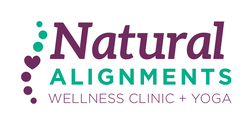|
Andrea Lee- Clinic Founder and Osteopathic Manual Therapist & Stacey Kerslake- Writer As you prepare to hit the slopes this winter, it is extremely important to be aware of the physical demands that snow sports have on the body. Although, skiing and snowboarding can be safe, unexpected injuries can occur if you are not properly prepared. Each year our clinic sees an increase in patients with ski and snowboard related injuries, and many injuries can be prevented with proper physical preparation, proper, well-fitted equipment and of course a little common sense. What causes skiing and snowboarding injuries?
The vast majority of ski and snowboard injuries are due to lift accidents, falls and collisions with other skiers/snowboarders or trees and poles. In many cases, injuries are often caused by poor judgment or fatigue after a long day on the hill. Some common issues that lead to injury include:
What are the most common injuries? There is a wide range of injuries that stem from skiing/snowboarding injuries, however the most common injuries are:
How to prevent ski/snowboard injuries: Warm Up: Prior to taking your first run, it is important to warm up those muscles. Be sure to complete a full body stretch before you leave home, ensure those muscles are warmed up and ready to take in the elements. Dress for the Elements: Always check the weather forecast before leaving home, so you can dress accordingly and prepare for your ski/snowboard experience. A well fitted helmet, goggles, wrist guards and other protective gear will help you prevent injury. Wear layers, and ensure you have a warm, sweat wicking base layer. Proper Instruction & Equipment: It is extremely important to take lessons prior to hitting the slopes. Instructors can educate new skiers/snowboardings on the importance of pre-ski preparation, fitted equipment (including helmets, wrist guards and other protective gear), safe skiing techniques and the various signs that appear in the resort and how to properly understand them and their meaning. Common Sense: Most injuries occur after lunch, or a long break when the skier/snowboarder is feeling fatigued. It is important to stay hydrated throughout the day and take breaks as needed. Be aware of changing weather conditions, as the weather can change very quickly in certain climates. Abide by the signs throughout the resort, and follow the rules Be Aware: Always stay in control. It is important to be aware of who is around you, acknowledge their ski/snowboard ability and grant space where you can. Before starting downhill, take note of those around you. If you need to stop, pull off the side rather than stopping in the middle of the hill. Observe signs, and be mindful of closed areas and abide by resort rules. Stay Connected: It is important to stay connected with friends or family while on the hill. Whether it be by phone or walkie talkie, updating your group on your whereabouts is key to remaining safe. Discussing a meet up spot prior to hitting the slopes is a great way to reconnect if the group gets separated. Now that you are prepared to hit the slopes, remember that if you experience any immediate or lingering injury after you return home, we offer an array of services to get you feeling your best, and get you back on the chairlift. Book your appointment with us today!
0 Comments
Leave a Reply. |
-
104 - 1 Prologis Blvd.
Mississauga, ON L5W 0G2
-
CALL US
905-565-0550 -
EMAIL US
[email protected]


 RSS Feed
RSS Feed